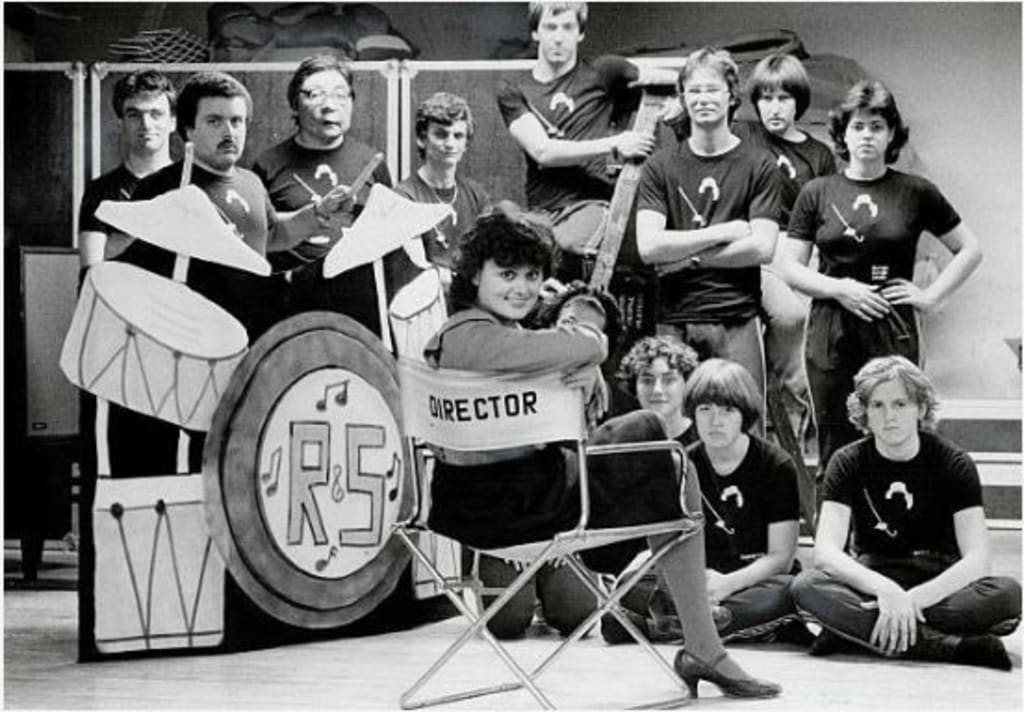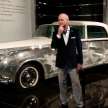Liberace and the Famous People Players
An unlikely partnership that changed public perception of the developmentally challenged

Growing up in the Toronto area, Diane Dupuy was a young woman who did not do well academically or socially, during her school years. Ostracized by other kids, she had in fact repeated several grades, only to later find herself herself having trouble keeping a job as a young adult.
Always the loner, as a child Diane had taken comfort in puppets. By herself, creating characters in her room was her escape. Nostalgic for that feeling, and unlucky in the job market, she decided to start a small, box-style puppet theater at a local fair ground. It was the early 1970's. The young woman's audiences seemed to enjoy her act, and she began to feel a little success. One day as she finished the show, she found an audience member still seated. Diane recognized him immediately as the young popular comedian of the day, Bill Cosby. He told her the show was wonderful, and suggested she look into something called black light theater, in which puppeteers are hidden in black costumes while animating full-scale puppets on a real stage. Diane was intrigued.
Dupuy began producing acts for black light theater, and happened into an opportunity to work with developmentally disabled (then called "retarded") actors. Nervous about the public's reaction to this unusual cast, she nonetheless took to the task, and managed some level of success.
During a production in front of an audience one day, one of her actors dropped to the floor, in seizure. The entire company and audience ran to the actor's aide, as he recovered. Diane was moved by the caring audience, and realized she was on to something. The Audience had grown to take a stake in the success of the show. They were emotionally attached. She decided to expand on the concept, and developed a proposal for a theater company made up entirely of the developmentally disabled. It had never been done, anywhere. She obtained an approval for grant funding, but had only three months to put the company together.
In completely uncharted territory, Dupuy was told by nearly every expert that this could not work, that the actors could not adapt to it, that it would only be perceived as a "freak show." But Diane Dupuy had had trouble all her life, a string of failures she was fed up with remembering, and a determination to make it happen. The nay-sayers and negativity became her fuel, only feeding her fire. She was driven.
Diane's idea to attract crowds was to develop black light, full-scale, stage puppets of famous people, and re-create their acts, with feeling, with humor. A natural choice was Liberace. His joyous, good-natured performance was a perfect match for her actors. The troupe were gradually trained to play not only Liberace, but all of the stage components, including his piano, the piano bench, the candelabra and more. Everything on stage was literally alive, moving as if by itself, to the music. To encourage her troupe, Diane told them that one day the real Liberace would see them, and be so impressed that he would have them play his famous show in Las Vegas with him.
The actors who made up the Famous People Players were cast into an experiment which had no precedent. No one really knew how this would work. Diane set strict guidelines, and the actors had to learn things which had previously been impossible to grasp.
It is important to remember what a different era it was for "retarded" people in 1974. Insulated and often kept from public exposure, little was known about how to advance those afflicted with the myriad of conditions described by the outdated term. Often shuttered, they were condemned to seclusion. Learning was seen as impossible, opportunities nonexistent, advancement and self-sufficiency out of the question.
But Diane Dupuy took a bold approach, out of sheer necessity. Young adults who could not write their name, or identify an address, or make change for a dollar were trained by Diane to take public transportation and be on time, to dress, to prepare. What seems like a menial task to the general public can be a monumental task for a developmentally disabled person. Hundreds of hours of practice became the norm. Practice was paramount. The almost certain failure would have stopped nearly anyone from completing even one such production, but Diane Dupuy had no such fear.
Be careful what you wish for
By the end of the first year, the show had advanced, but there were frustrating and time-consuming setbacks, and Diane began to doubt the possibility of a long term opportunity.
That's when Liberace played Toronto.
Cast members of the Famous People Players found the advertisement for the Liberace show, and presented it to Diane. Here was the man she had always told them would love their show. In their minds, they simply must perform for him. Their enthusiasm buoyed her up. They promised her they would work harder than they ever had, practice like never before, do whatever it takes, to put together the performance of their lives, if she could just get Liberace to see the show. After a year of using his name to motivate the actors, now Diane was the one who had to perform. Reinvigorated by the troupe's enthusiasm, she set about the task.
Liberace received hundreds of requests daily then. He was pursued by acts, by fans, by press - the phones were constantly ringing. But Diane Dupuy was relentless in her pursuit of Liberace in Toronto. She called. She wrote. She showed up. She would not be dissuaded from getting his audience. Finally, he took notice because she had mentioned a troupe of young people who had worked so hard in hopes of having him see the fruits of their efforts. He took a meeting with Diane. She convinced him to come to the show, at a local convention.
There was just one little detail she had left out. Diane had not mentioned to Liberace the fact that her actors were developmentally disabled. She wasn't trying to be deceptive, but she also did not want pity. In fact, she didn't want him to consider the Famous People Players as anything but a professional theater company.
Diane, Liberace, and few of the actors themselves tell the story in 1999
Liberace was astounded at the show's ability to tap into the gamut of human emotions, and so impressed with their professionalism and crowd response, that he announced he would bring them to Las Vegas, before the final bows were taken - before he even knew of the disabilities of the troupe's actors. But presented moments later with the reality of the situation, he did not miss a beat, telling the actors they'd better be good.
The Famous People Players not only played Las Vegas with Liberace, they toured with him for two years. This opened doors and brought incredibly publicity. Liberace and Diane Dupuy became close friends. She considered him her mentor, and he considered her and her troupe among his greatest discoveries.
A television movie called Special People, starring Brooke Adams as Diane Dupuy and featuring Liberace as himself, aired in 1984. Documentaries followed. A key moment which took place when Liberace first saw the Famous People Players is re-created in Special People. In the scene, the actors huddle on stage after taking their bows, with Liberace and Diane. Liberace tells the troupe that the applause is not because of who they are, but because they are so very good at what they do. Diane Dupuy still relates this moment to all who inquire about the history of her troupe.
Taking a bow with Liberace: A real-life event re-created in the film
The black light performance of Famous People Players, discovered by Liberace, became his opening act for the remainder of his career. Their production of the Sorcerer’s Apprentice was part of the re-opening of Radio City Music Hall. They did two runs on Broadway and performances in China, Korea, Singapore, and throughout the United States. Their Dine & Dream Theatre in Toronto was generously sponsored by actor Paul Newman through sales of Newman’s Own products sold in Canada. He remained a very devoted supporter and honorary director on their board.

Famous People Players were the first to perform at the Peace Memorial in Hiroshima during their tour of Japan. They appeared on A&E Breakfast for the Arts and Bravo! 7th Heaven, Red Skelton’s Funny Faces, and gave a televised performance for Ronald Regan at the Shamrock Summit. Special People became an Emmy Award-winning CBS Movie of the Week.
Diane Dupuy became an outstanding motivational speaker who spoke along-side former Vice President Al Gore at the Alliance for a New Humanity. With five honorary degrees, she was awarded the Order of Canada and the Queen’s Jubilee medal for her work in Theatre and her dedication to the integration of "PEOPLE with disABILITIES."
When in Toronto, book tickets!

"Fortune favors the bold."
-Roman proverb
About the Creator
Jonathan Warren
Honorary Consul of Monaco, Chairman of the Liberace Foundation for the Performing and Creative Arts, 50 years in Vegas, Citizen of the world.
www.jonathanwarren.me






Comments
There are no comments for this story
Be the first to respond and start the conversation.